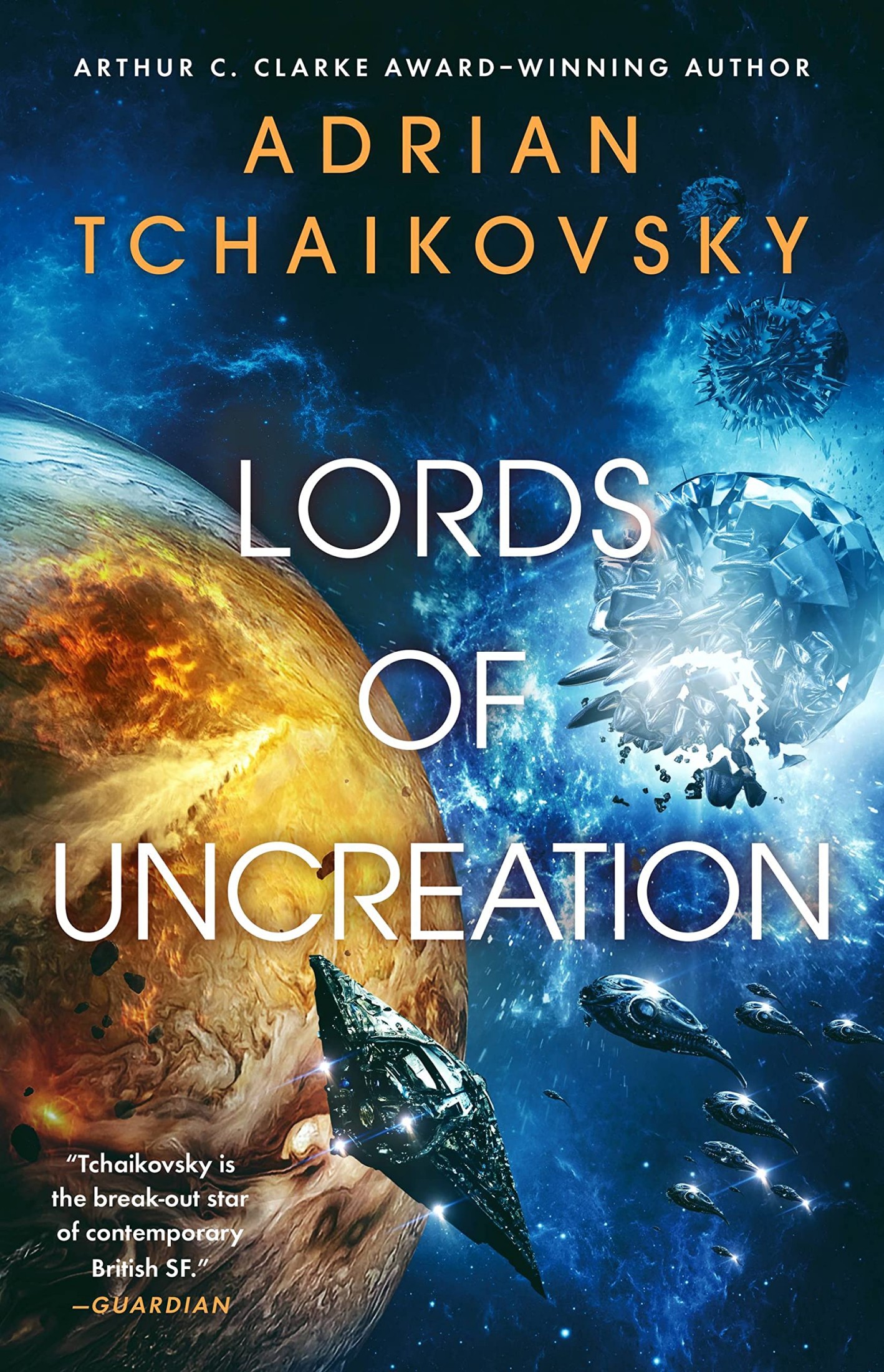Lords of Uncreation

Review
Lords of Uncreation, by , is the third and final book in the The Final Architecture series. In it, humanity takes the war into Unspace to destroy the Architects and their Originator masters.
The story of The Final Architecture series has always been its main draw. Lords of Uncreation is my favorite of the series because it focuses the most on that story. The writing has improved a bit too—I didn’t find myself sighing or writing down particularly bad sentences as I did with Shards of Earth and Eyes of the Void—and even my least favorite character, Olli, gets some redemption when she becomes the new Aklu.
But the book is far from perfect. It moves too slowly. A third of it is spent reigniting the human civil war, just when I was ready to finally face the Originators. Idris has been reduced to whining about destroying the Architects. His argument that humanity shouldn’t fight back was more interesting the first time I saw it in things like Ender’s Game, Speaker for the Dead, and Star Trek’s I, Borg, but it’s tiring now, just as it was in Judas Unchained. Not every book needs to wrestle with who the real bad guys are. Sometimes, like in The War of the Worlds, they’re the ones committing genocide against humanity.
This book reminded me of a bunch of others. Like ’s A Memory Called Empire, territories in Lords of Uncreation are defined by contagious Throughway connections, not by physical space. Both the Parthenon and the Teixcalaanli have a ritual list they read of those who died in combat. The giant Hegemonic ring around a star is like the rings around Harmonious Repose in ’s A Fire Upon The Deep. The human arks, where the rich plan to escape civilization with their underclass of servants, remind me of Rapture in BioShock. Thinking-as-pollution that distorts space is like the Pale in Disco Elysium, and the Architects as “thought and complex distortions” in Unspace echo the sentient black hole in Eater. The Host ship being a collection of loose scales reminded me of Culture ships.
The Originators themselves borrow from several sources. When they project into the Eye, they appear as something uniquely terrifying to each viewer, which reminded me of how the Overlords look like devils in Childhood’s End. The fact that they’re bluffing is similar to the eponymous wizard in The Wizard of Oz. Their psychological attack on Solace, telling her how insignificant she is, felt like the Total Perspective Vortex in The Hitchhiker’s Guide to the Galaxy; the fact that it’s all in her mind recalls the virtual War in Heaven from Surface Detail. And the idea that they’re refugees from a previous universe reminds me of The Last Question.
I’m glad to be done with The Final Architecture series. It had some interesting ideas, but it should have been shorter, more focused, and had a few more polishing passes on the writing. On to Roadside Picnic and The Unconquerable next, before picking up Hyperion again for book club.